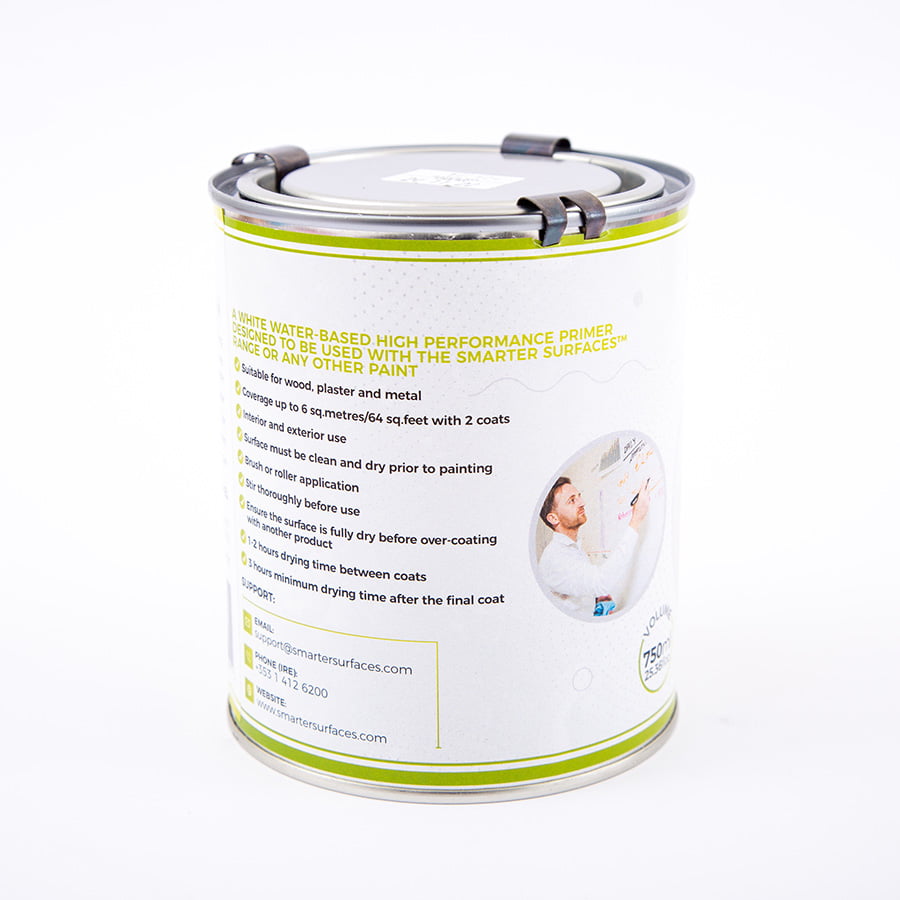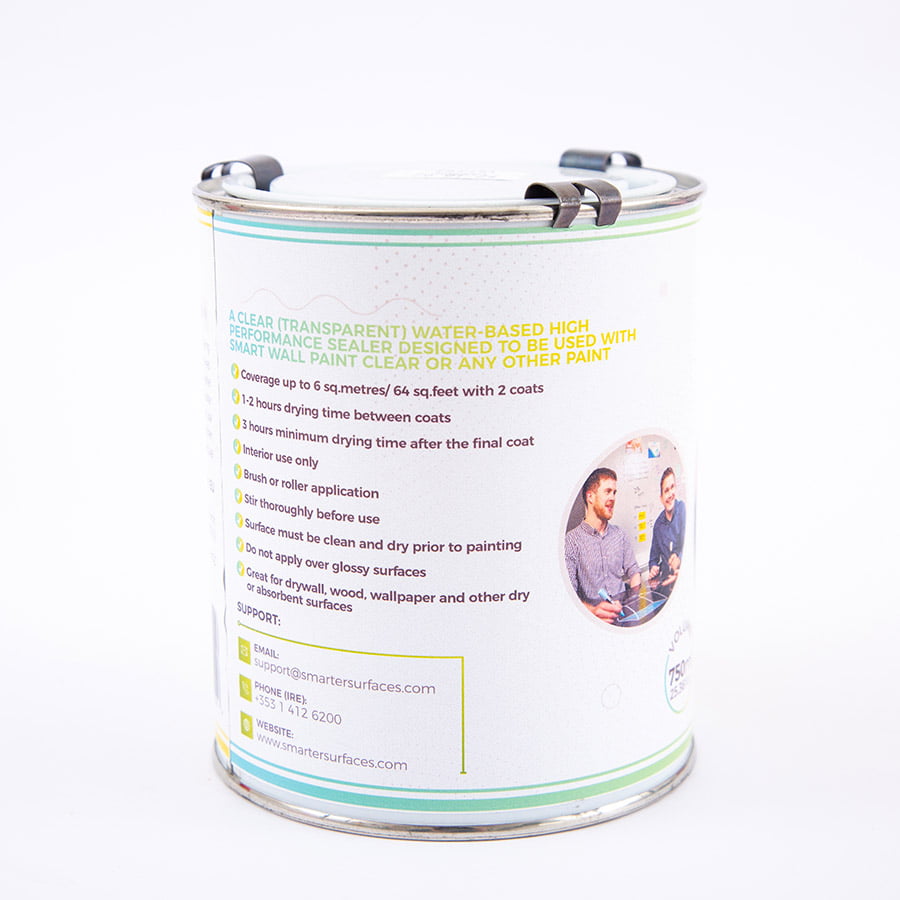Home - Primers & Adhesives
Primers, Adhesive for Whiteboard Walls & Projection Surfaces
At Smarter Surfaces, we provide top-tier white and clear primers, as well as specialised vinyl-over-vinyl adhesive, to prepare surfaces smoothly before applying whiteboard, magnetic, or projection paint, or before installing dry erase wallpaper.
White Primer Paint – Matte Finish, Water-based
From $34.00 Select options This product has multiple variants. The options may be chosen on the product pageVOV Vinyl Over Vinyl Wallpaper Adhesive
$52.00 Select options This product has multiple variants. The options may be chosen on the product page
Expert Surface Preparation Solutions for Paint and Wallpaper Application
At Smarter Surfaces, our water-based primers and adhesives make surface preparation before painting simple and effective, helping you transform any area into a writable or magnetic space.- Primer for Paint: Our high-opacity white primer creates a smooth, even base. Perfect for preparing surfaces for whiteboard or magnetic paints. Use our clear primer to maintain the original color or design of your wall while ensuring optimal surface preparation before painting or coating.
- Adhesive for Wallpapers: Specially developed for whiteboard wallpaper installation, our Vinyl-Over-Vinyl Adhesive forms a strong, long-lasting bond on vinyl, glass, and composite surfaces. Ideal for heavy wallpapers and durable results.
FAQ's
To ensure optimal primer adhesion, it is imperative to meticulously clean the surface, removing all dirt and dust particles. For surfaces with a glossy finish, a light sanding is recommended to create a suitable texture for the primer to adhere effectively. Additionally, you must ensure that the surface should be completely dry before proceeding with primer application.
Yes, applying a primer is essential when using white dry erase paint, especially on porous or dark surfaces. Primer helps establish a smooth, sealed foundation, thus promoting proper paint adhesion and this in turn results in a flawless finish. However, for transparent or clear whiteboard paint, a clear primer is required only on porous surfaces.
Well, begin by thoroughly removing any dirt, grease, or dust using a mild detergent. Address any cracks or holes by repairing them, lightly sand the surface to ensure smoothness, and make sure that the surface is entirely dry before initiating the priming process.
A general primer serves as a preparatory coating applied to surfaces before painting. In contrast, a surface primer is specifically formulated to adhere to various materials, such as plastic, metal or wood, providing a tailored base for the subsequent topcoat.
Initially, clean the board and perform a light sanding to smooth the surface. Apply a coat of primer using a brush or roller. For attaining the most optimal results, once the initial coat has dried, apply a second coat to ensure even coverage before proceeding with painting.
No, substituting white paint for primer is not advisable. Primer is specifically formulated to adhere to surfaces, seal imperfections, and provide a uniform base. These are functions that regular white paint cannot perform effectively.
Neglecting to apply primer can lead to suboptimal paint adhesion, uneven colouration, and diminished durability. Consequently, the paint may peel or chip, thus necessitating additional coats and thereby increasing both effort and cost.
Yes, lightly sanding the primer with fine-grit sandpaper can help smooth out imperfections and create an even surface for painting. So you must ensure that any resulting dust is thoroughly removed after sanding.
Clean and repair the surface, ensuring it is smooth and free of any cracks or holes. For glossy or slick surfaces, light sanding may be necessary to facilitate proper primer adhesion.
Commence by cleaning the existing vinyl surface to eliminate any dirt or grease. Then gently sand the area to enhance adhesion, and ensure the surface is completely dry before applying the new vinyl adhesive.
Yes, employing a vinyl-over-vinyl adhesive is essential to ensure a strong bond between the existing vinyl surface and the dry erase wallpaper, thereby promoting long-lasting durability and performance.







